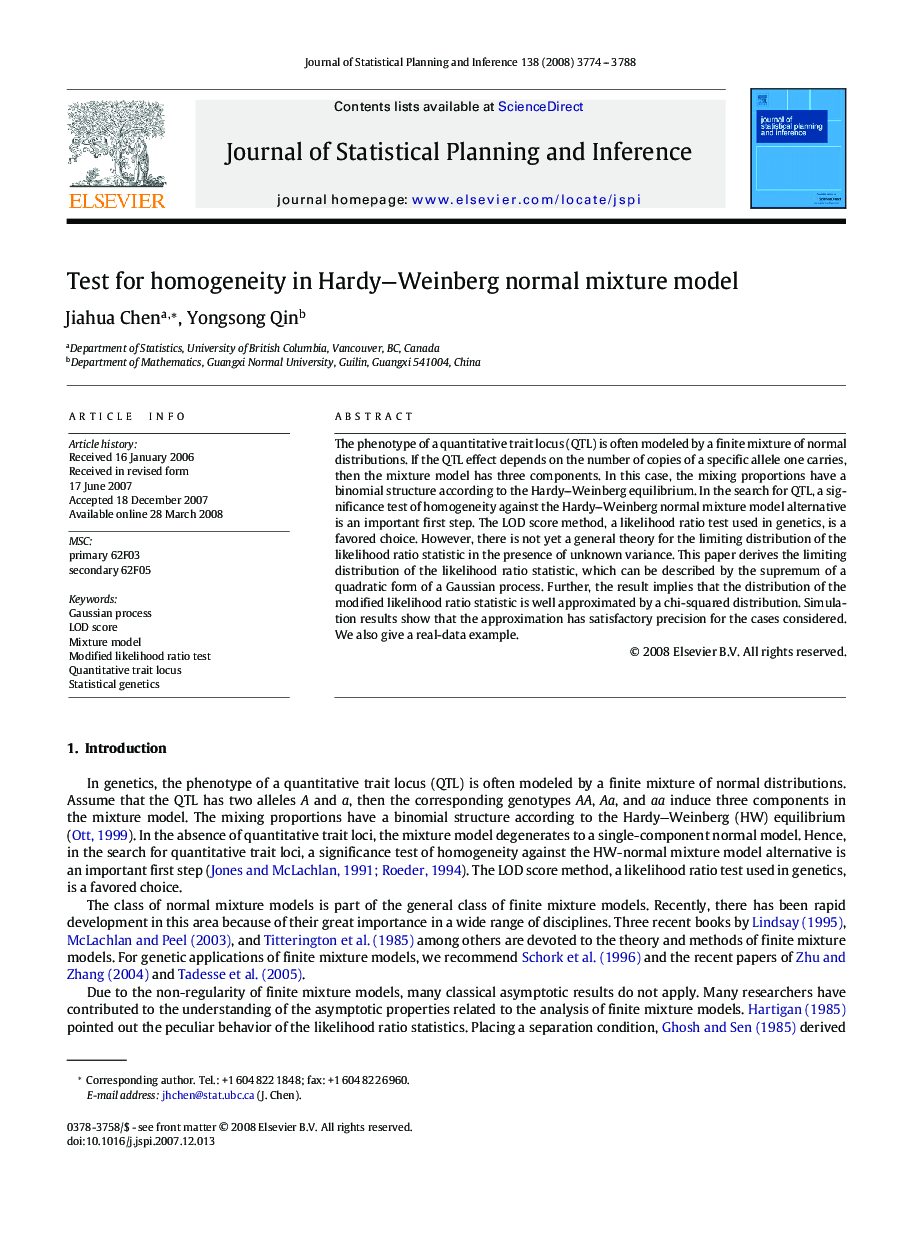| Article ID | Journal | Published Year | Pages | File Type |
|---|---|---|---|---|
| 1148206 | Journal of Statistical Planning and Inference | 2008 | 15 Pages |
The phenotype of a quantitative trait locus (QTL) is often modeled by a finite mixture of normal distributions. If the QTL effect depends on the number of copies of a specific allele one carries, then the mixture model has three components. In this case, the mixing proportions have a binomial structure according to the Hardy–Weinberg equilibrium. In the search for QTL, a significance test of homogeneity against the Hardy–Weinberg normal mixture model alternative is an important first step. The LOD score method, a likelihood ratio test used in genetics, is a favored choice. However, there is not yet a general theory for the limiting distribution of the likelihood ratio statistic in the presence of unknown variance. This paper derives the limiting distribution of the likelihood ratio statistic, which can be described by the supremum of a quadratic form of a Gaussian process. Further, the result implies that the distribution of the modified likelihood ratio statistic is well approximated by a chi-squared distribution. Simulation results show that the approximation has satisfactory precision for the cases considered. We also give a real-data example.
